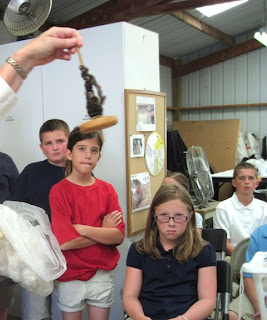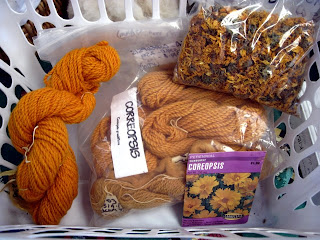Happy Halloween, bloggers!
We held a Pizza Sort Party in the Fiber Barn Saturday, 29 October, and enjoyed the help from several friends. We invite you to hold your own sorting parties...it's way more fun than sorting alone!
 Barb Bray with Dorie (her pal) and Charis Campbell with Ginni (her fave), from Alpacas at Porterbray Pines in Fowler, CA, near Fresno.
Barb Bray with Dorie (her pal) and Charis Campbell with Ginni (her fave), from Alpacas at Porterbray Pines in Fowler, CA, near Fresno. Our two smallest new friends reminded us to share our latest idea...we're gathering old pet beds from thrift shops, emptying the contents (usually bad for pets to ingest, if accessed), washing & repairing them, removing brand labels, then refilling with alpaca "stuffing"....the left over alpaca from our sort on neck/leg bags. These are pieces that are too short, or too fine and spider webby, etc...yet clean and free of debris. We're then donating the beds to our local dog/cat rescue shelters.
We're also contacting pet bed manufacturers for future Alpacazonia purchase orders!
Two more good friends joined Dave and I for several hours of sorting our recently collected alpaca fiber.
 Barbara Zachary of New Age Alpacas in Atascadero, CA
Barbara Zachary of New Age Alpacas in Atascadero, CAWe stopped midway for Pizza and libations, then back to sorting...
Here's our result....we're now at 90% mark in our quest to bale 2,000 lbs.
Thanks everyone! The day's added 23 lbs really helped!
Check back next week....we're baling the last of the fiber for this purchase order. How close will we get to 2,000? We've still got 200 more lbs to sort here, before we head to Cal Poly next Friday! Wish us God speed. Sandra
















































